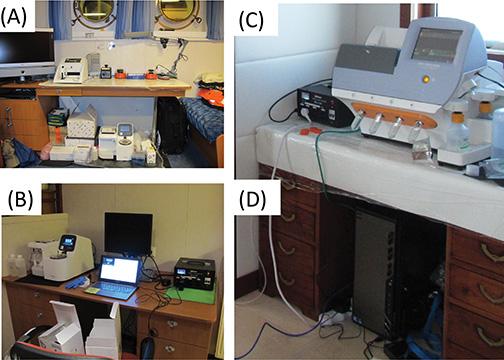A group of San Diego State researchers who succeeded in bringing a DNA sequencer onboard a ship to analyze DNA samples onsite recently published an account of their work in the journal PeerJ.
The research group comprised of computer science associate professor Robert Edwards, biology professor Forest Rohwer, postdoctoral scholar Andreas Hass and graduate student Yan Wei Lim.
Their research led them on a three-week, five-island journey to the Southern Line Islands last year to understand how coral reefs work without human interaction; pristine reefs versus non-pristine reefs. The Land Island coral reef’s nonhuman interaction made it a suitable region.
Aboard the 158-foot merchant ship Hanse Explorer, and along with other San Diego scientists and researchers from around the world, SDSU scientists were able to sequence 26 bacterial genomes and two meta-genomes. The group was able to account for the entire DNA present in the Line Island region.
Life Technologies, a San Diego-based science equipment company provided the DNA sequencer for the scientists. The research was funded through the Gordon and Betty Moore Foundation, private donors and the National Science Foundation.
Other researchers didn’t think that the scientists would be able to do DNA sequencing aboard a boat and bring back concrete research because previously, researchers had not taken sequencing equipment out in the field, especially in the middle of the Pacific Ocean.
The specific focus was to understand how diversity and energy flow in an ecosystem work.
“So my hope is like even in the next five to 10 years being able to just do biology like regular biology but on a microbial scale anywhere in the world,” Rohwer said.
Sequencing equipment takes up a lot of space so the team had to place different equipment throughout the whole ship. Bringing the sequencer to sea eliminated the time delay between gathering data and sequencing. Normally scientists had to wait until they came back to shore to begin analyzing their research, according to the team’s recollections in PeerJ.
Rohwer explained that the team had to build a variety of different tools to sample underwater and extract DNA from things like vacuum cleaners to bring back water samples and filters.
This team has been working together for more than a decade, which contributed to the teams rapport and partnership.
This journey was a collaborative project that consisted of different working groups. Each group, such as the fish group and micro group, had different tasks to work on.
The team has wanted to put a sequencer on a ship since about 2008. Challenges of doing lab work on the ship were apparent with power problems and power requirements. Rohwer credits that it probably would not have been a success without the team they had because lots of things broke.
At the end of the expedition the scientists went on a dive to commemorate their hard work.
“Gigantic sharks, and giant fish, dolphins everywhere, it was a good half an hour just diving with the dolphins,” Rohwer said. “Just everything and everyone was really excited, kind of almost laughing, because they were so excited.”
SDSU researchers throughout the years have ventured out to the Line Islands to collect data from the coral habitat in that specific region to study its vast ecosystem because of the lack of human activity in the region.







